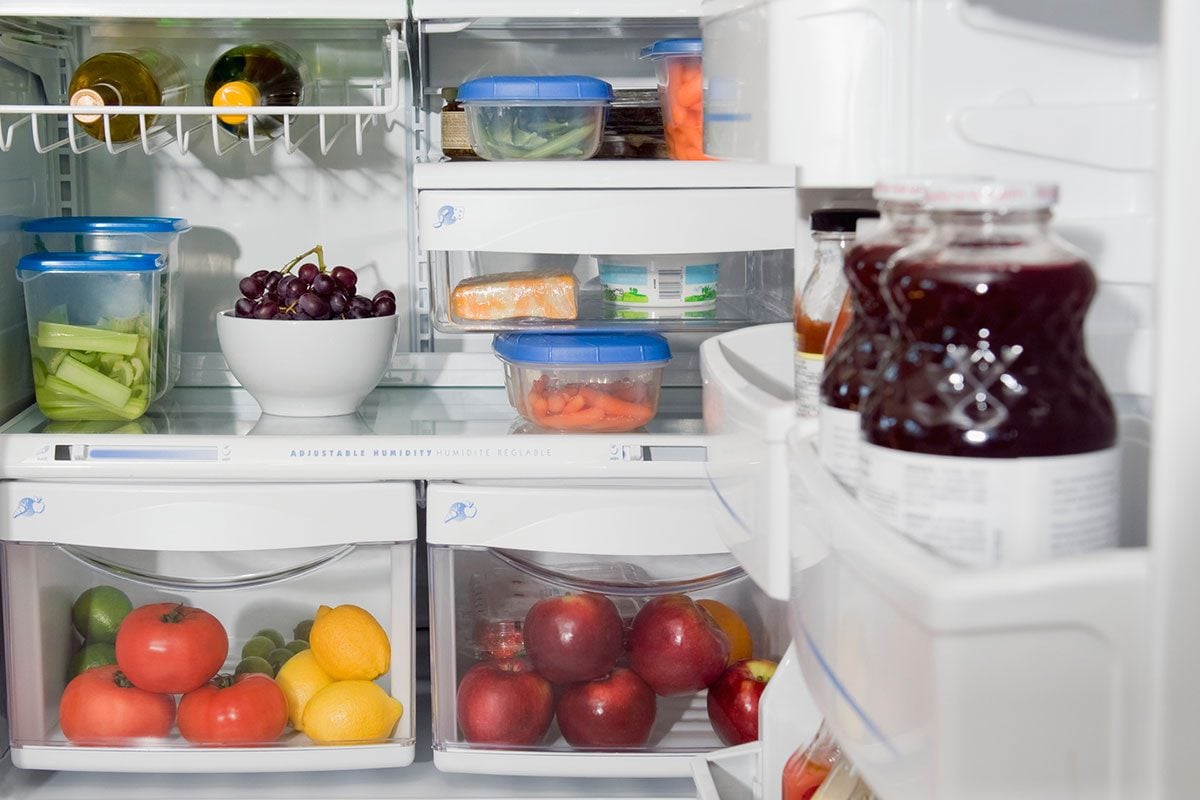Maximizing space in a counter-depth refrigerator calls for creative solutions and clever gadgets.

Storage Solutions for Counter-Depth Refrigerators

Counter-depth refrigerators continue to be a hot trend in home appliances. That’s a bit surprising, since these streamlined fridges feature fewer cubic feet of interior space, leaving less room for food and drinks. Many consumers want more space, not less.
Making the most of less space means rethinking conventional ideas about what goes where in a refrigerator. With some practical storage solutions for counter-depth refrigerators, giving up those few extra cubic feet won’t feel like such a sacrifice.
On This Page
What Is a Counter-Depth Refrigerator?
Introduced to the market a few years ago, counter-depth refrigerators are the depth of a standard kitchen counter, which is usually not more than 29 inches. Consumers typically choose a counter-depth refrigerator for the following reasons:
- Aesthetics. Because they don’t stick out from the line of the countertop, counter-depth fridges create a clean look in a kitchen.
- Traffic flow. In a tight intersection in a kitchen, a counter-depth fridge allows for more space for people to maneuver.
- Better display of contents. Because they are shallower than traditional fridges, it’s easier to see what’s inside.
The biggest downside is their smaller capacity. A standard fridge/freezer can have up to 31 cubic feet of space, while most counter-depth refrigerators are no more than 23 cubic feet.
How To Store More in a Counter-Depth Refrigerator
Try these four organizing principals for optimizing your limited refrigerator space. Starting with a cleaned-out fridge helps!
Make the Most of Vertical Space
These three products help you unlock unused vertical space in your fridge.
- A tiered lazy Susan is great for smaller condiment jars and bottles normally stored in the door, and it doubles the capacity of the space. The spinning feature keeps everything accessible. Kris Arabia, head of design and product for mDesign, says once the door is clear, “you can move bottles and cartons into the door where they are all easily visible and accessible.”
- Stackable bottle holders and can holders can create a “beverage zone,” Arabia says, that fits more into the same space and makes it easy to grab and go.
- Stackable bins are perfect for stashing snacks, yogurts, eggs, lunch meats, cheeses and pre-prepped fruits and veggies, says Brandie Larsen of Home Sort, a home organizing service and resource hub.
Stick with Clear Containers
No need to guess or open, which means fewer mystery containers cluttering up the fridge and less wasted food. Here are three features to consider:
- Handles. “They’re easier to grab, for kids or even for cooks with slippery, wet hands!” Arabia says.
- Rectangular. Long, rectangular bins also allow you to use the back corners of your fridge, which might otherwise remain empty. Pack like-shaped items in them to get the most out of the space.
- Vented and lidded. Whole fruits, veggies and heads of lettuce take up less space when sliced and prepped, Plus, they’ll last longer in this type of container.
User-Friendly Freezer Solutions
Counter-depth fridges have less room for frozen items, too. The freezer portion of counter-depth refrigerators most often consists of two drawers. Here are some solutions to optimize that freezer space:
- Divide to Conquer. Measure the dimensions of each drawer. Then buy plastic bins in assorted sizes that, when used together, tightly fit into the drawer area with no wasted space. You won’t need the lids, as these containers will “live” in your freezer.
- Group Like With Like. Sort frozen foods by type — ice cream and frozen treats in one section, bagged vegetables in another, meats in another, etc. — so everyone in the household knows where to look for them. Plus, nothing gets lost and develops freezer burn. Label the bins to help.
- Unpackage. Save space by taking items like frozen waffles or individually wrapped ice cream bars out of their cartons.
Square Up Food Storage Containers
As you replace your plastic or glass food storage containers, eliminate the round ones and replace them with clear square- or rectangular-shaped containers. They’ll maximize space in your fridge and your cabinets, and you’ll always be able to see what’s in them.




















